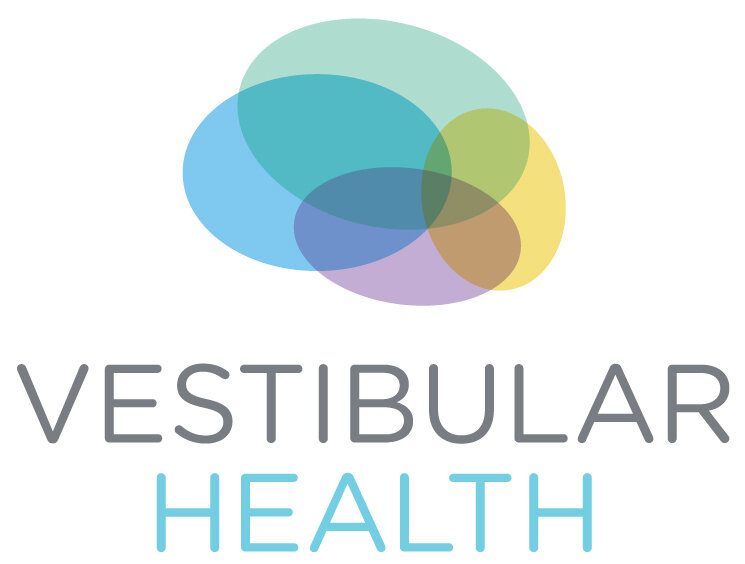Research update: BPPV and vitamin D
Research suggests that vitamin D deficiency could be related to BPPV, and that taking vitamin D supplements might help some people reduce their risk of having repeated episodes of BPPV.
Read on to learn more about BPPV, risk factors for recurrence, and the role of vitamin D.
What is BPPV?
Benign Paroxysmal Positional Vertigo (or BPPV for short) is the most common cause of vertigo and the most common inner ear disorder. This condition causes episodes of vertigo - a specific sensation of dizziness that is usually a feeling of rotation or seeing the room turn. With BPPV, this spinning sensation lasts less than a minute at a time, and often less than 30 seconds at a time. Symptoms are triggered by position changes like lying down, rolling over in bed, bending down, and looking up. In between episodes of vertigo you can feel off balance, nauseous, and unwell.
BPPV is a mechanical problem in the inner ear. It is caused by ‘loose crystals’ moving in the inner ear where they are not supposed to be. Calcium carbonate crystals, called otoconia, are supposed to be embedded in the utricle. If some of these crystals become dislodged and move into the semicircular canals, they disrupt normal fluid movement in the canals. The ‘loose crystals’ move with gravity, and cause a false signal about head movement to be sent to the brain. This causes symptoms of vertigo, dizziness, or imbalance, and also causes abnormal eye movements called nystagmus
How can I prevent BPPV?
If you have experienced BPPV, you may wonder if there is anything you can do to prevent it from happening again. It is relatively common to have episodes where symptoms return, particularly if BPPV happens after head injury. BPPV has a one year recurrence rate of 20% and a five year recurrence rate of 50%. The recurrence rate of BPPV due to head trauma is higher at 57%.
It can be helpful to have a health care provider who can evaluate and treat you if symptoms return. You may want to learn how to do self-treatment maneuvers correctly as instructed by a qualified vestibular rehab physiotherapist. Having a clear plan for what to try on your own and when to seek additional care can be very helpful if your symptoms do return.
Daily Brandt-Daroff exercises have not been shown to prevent recurrence. BPPV maneuvers (e.g. Epley, Semont, Foster, Lempert/BBQ roll) provide effective treatment when BPPV is active, but are not preventative.
Risk factors for BPPV recurrence
Hypertension (high blood pressure)
Diabetes
Cardiovascular disease
Female
Migraine
Head trauma
High total cholesterol
Older age (>60 years)
Having other inner ear disorders (e.g. vestibular neuritis, Meniere’s disease)
Osteoporosis or osteopenia (low bone density)
Vitamin D deficiency
BPPV, calcium, and osteoporosis
Research has demonstrated that osteoporosis is a risk factor for BPPV and for recurrence of BPPV. Osteoporosis causes decreased bone mineral density. In theory, osteoporosis could affect all bones including those surrounding the inner ear. The inner ear ‘crystals’ that cause BPPV are made of calcium carbonate. It is possible that osteoporosis affects the calcium balance in the inner ear, which could be why there is a relationship between osteoporosis and BPPV.
A systematic review and meta-analysis identified 12 studies looking at the link between osteoporosis and BPPV. People with BPPV had a higher risk of osteoporosis than people without BPPV. This was the case for males, females, and people ≥55 years of age.
Does vitamin D help with BPPV?
Vitamin D plays a key role in maintaining calcium balance in our bodies. It helps us absorb calcium and is important for bone mineralization. We obtain vitamin D from sun exposure, a few foods (e.g. fatty fish, fish liver oils, fortified milk, egg yolks, some mushrooms), and supplements.
Vitamin D could have an impact on the otoconia ‘crystals’ of our inner ear through its role in calcium regulation. Vitamin D is also believed to have a role in immune and inflammatory responses.
Vitamin D deficiency is a risk factor for BPPV and for repeated episodes of BPPV. There is emerging high-quality research that supports a potential role for vitamin D supplements in preventing recurrence of BPPV.
A systematic review identified 12 studies looking at vitamin D supplementation and recurrence of BPPV. This review concluded that in people who have BPPV and vitamin D deficiency or insufficiency, that vitamin D supplementation can 1) decrease the number of people who experience recurrence of BPPV, and 2) decrease the number of relapses each person experiences. This review does point out the need for additional randomized controlled studies that involve larger groups of patients and longer follow-up periods.
Vitamin D deficiency
Vitamin D levels are not typically included as part of routine blood work. Your vitamin D levels are usually only checked if you are at high risk for vitamin D deficiency, or have certain conditions such as osteopenia or osteoporosis, a history of non-traumatic/fragility fractures, or liver disease.
25-hydroxy vitamin D is the test used to evaluate vitamin D status. This is the best way to determine if you have adequate vitamin D from sun exposure/skin production and oral intake.
The Canadian Health Measures Survey identified that just over two-thirds of Canadians (68%) had blood concentrations of vitamin D over 50 nmol/L - which is a level sufficient for health in most people. About 32% of Canadians were below the cut-off of 50 nmol/L. About 40% of Canadians were below the cut-off in winter, compared with 25% in the summer.
Should I take vitamin D supplements for BPPV?
This article is for educational purposes only. If you have had BPPV and are worried about recurrence, you should talk with your doctor about whether you should check the level of vitamin D in your blood, and whether you could benefit from taking vitamin D and/or calcium supplements. Talk to your doctor and pharmacist before starting any supplements.
Not sure if BPPV is causing your symptoms? Want to learn how to treat your BPPV? Book a vestibular rehabilitation physiotherapy assessment.
-
AlGarni MA, Mirza AA, Althobaiti AA, Al-Nemari HH, Bakhsh LS. Association of benign paroxysmal positional vertigo with vitamin D deficiency: a systematic review and meta-analysis. Eur Arch Otorhinolaryngol. 2018;275(11):2705-2711. [link]
Chen J, Zhao W, Yue X, Zhang P. Risk Factors for the Occurrence of Benign Paroxysmal Positional Vertigo: A Systematic Review and Meta-Analysis. Front Neurol. 2020;11:506. [link]
Hanley DA, Cranney A, Jones G, et al. Vitamin D in adult health and disease: a review and guideline statement from Osteoporosis Canada. Canadian Medical Association Journal. 2010;182(12):E610-E618. [link]
Holick MF. Vitamin D status: measurement, interpretation, and clinical application. Ann Epidemiol. 2009;19(2):73-78. [link]
Hong X, Christ-Franco M, Moher D, et al. Vitamin D Supplementation for Benign Paroxysmal Positional Vertigo: A Systematic Review. Otol Neurotol. 2022;43(7):e704-e711. [link]
Im JH, Kim JM, Lee SH. Differences in clinical characteristics of idiopathic benign paroxysmal positional vertigo according to the serum vitamin D status (4195). Neurology. 2020;94(15_supplement):4195. [link]
Jeong SH, Choi SH, Kim JY, Koo JW, Kim HJ, Kim JS. Osteopenia and osteoporosis in idiopathic benign positional vertigo. Neurology. 2009;72(12):1069-1076. [link]
Jeong SH, Kim JS, Kim HJ, et al. Prevention of benign paroxysmal positional vertigo with vitamin D supplementation: A randomized trial. Neurology. 2020;95(9). [link]
Jeong SH, Kim JS, Shin JW, et al. Decreased serum vitamin D in idiopathic benign paroxysmal positional vertigo. J Neurol. 2013;260(3):832-838. [link]
Kim CH, Kim K, Choi Y. Do Patients with Benign Paroxysmal Positional Vertigo Have a Higher Prevalence of Osteoporosis? A Systematic Review and Meta-Analysis. JPM. 2024;14(3):303. [link]
Lee A, Hassannia F, Bergin MJ, Al Zaabi K, Misale P, Rutka JA. The Relationship Between Disorders of Bone Metabolism and Benign Paroxysmal Positional Vertigo: A Systematic Review. Ear & Hearing. 2021;42(6):1462-1471. [link]
Mancera Sánchez J, Hernaiz Leonardo JC, Ishiwara Niembro JK, Lesser JC. Therapeutic Effect of the Correction of Vitamin D Deficiency in Patients with Benign Paroxysmal Positional Vertigo. A Randomized Clinical Trial. Int Arch Otorhinolaryngol. 2022;26(04):e666-e670. [link]
Rhim GI. Serum Vitamin D and Long-term Outcomes of Benign Paroxysmal Positional Vertigo. Clin Exp Otorhinolaryngol. 2019;12(3):273-278. [link]
Rhim G, Kim MJ. Vitamin D Supplementation and Recurrence of Benign Paroxysmal Positional Vertigo. Nutrients. 2024;16(5):689. [link]
Seyed Resuli A, Bedir A, Özgür A. The Relationship Between Benign Paroxysmal Positional Vertigo and Vitamin D. Cureus. Published online June 18, 2022. [link]
Song P, Zhao X, Xu Y, et al. Correlation Between Benign Paroxysmal Positional Vertigo and 25-hydroxyvitamin D. Front Neurol. 2020;11:576. [link]
Von Brevern M, Radtke A, Lezius F, et al. Epidemiology of benign paroxysmal positional vertigo: a population based study. Journal of Neurology, Neurosurgery & Psychiatry.;78(7):710-715. [link]
BCGuidelines.ca, Guidelines & Protocols Advisory Committee - Vitamin D testing. [link]
Statistics Canada, Vitamin D blood levels of Canadians. [link]
NIH Vitamin D Factsheet for Health Professionals. [link]




